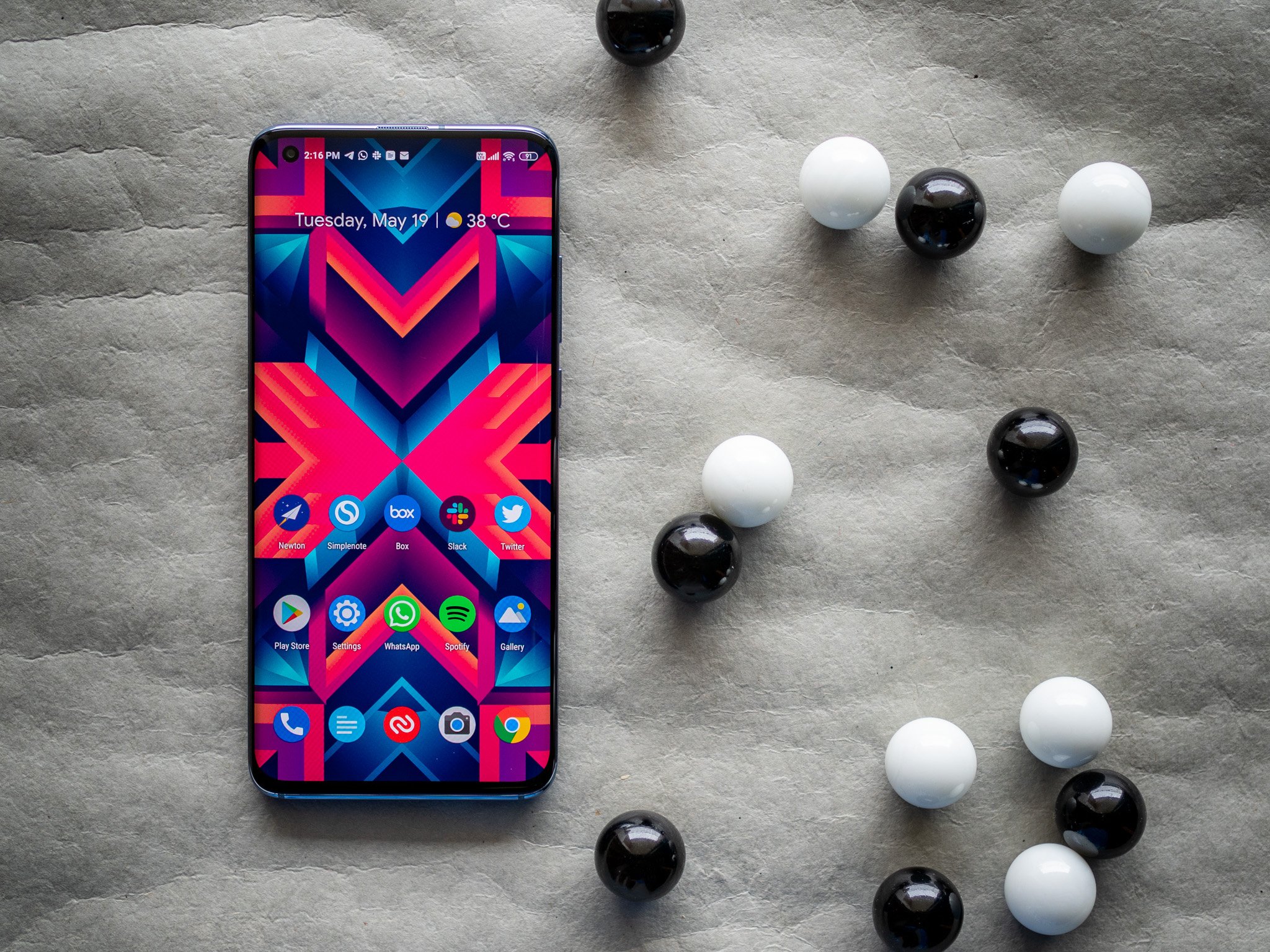Android Central Verdict
Bottom line: The Mi 10 Pro is Xiaomi's best phone to date. The 108MP camera takes outstanding photos in all lighting conditions, and you get the latest hardware money can buy today. The AMOLED panel has smooth scrolling thanks to the 90Hz refresh rate, and there's 50W wired and 30W wireless charging. The software has a learning curve, but overall you're getting a lot for your money.
Pros
- +
Fantastic 108MP camera
- +
Gorgeous design
- +
Vibrant 90Hz AMOLED screen
- +
Latest internal hardware
- +
50W wired and 30W wireless charging
- +
Excellent stereo sound
Cons
- -
MIUI still has its quirks
- -
No IP rating
- -
Limited global availability
Why you can trust Android Central
Xiaomi knows how to make a good phone; after all, it is the fourth-largest smartphone manufacturer in the world. But the brand owes its success to the entry-level and budget segments, where it is dominant. Xiaomi also makes flagships in the Mi and the Mi Mix lineups, with the Mi phones in particular aimed at the value flagship segment.
Factor in devices like the POCO F1 and the Redmi K20, and Xiaomi's value offerings look very crowded. That's why the manufacturer branched out POCO and Redmi as standalone entities, and with those brands now catering to the budget as well as the mid-tier segments, it frees up the Mi moniker to focus exclusively on the high-end category.
That's what it is doing with the Mi 10 Pro, its first "true" flagship. The Mi 10 Pro comes with all the bells and whistles you'd expect from a high-end phone in 2020, including the latest internal hardware, 108MP camera at the back, 50W wired and 30W wireless charging, and a 90Hz AMOLED panel.
There's no shortage of competition in the high-end category; between Samsung, Google, OnePlus, OPPO, Motorola, and Huawei, there are enough options available if you're in the market for a high-end phone in 2020. So does the €999 Mi 10 Pro have what it takes to hold its own in this category? Let's find out.
About this review
I am writing this review after using the global variant of the Mi 10 Pro for six days in Hyderabad, India. The phone was running a stable build of MIUI 11.0.70, and it received a single update to MIUI 11.0.10.0 containing the April security patch over the testing period. Xiaomi provided the phone to Android Central for review.
Xiaomi Mi 10 Pro Design and display
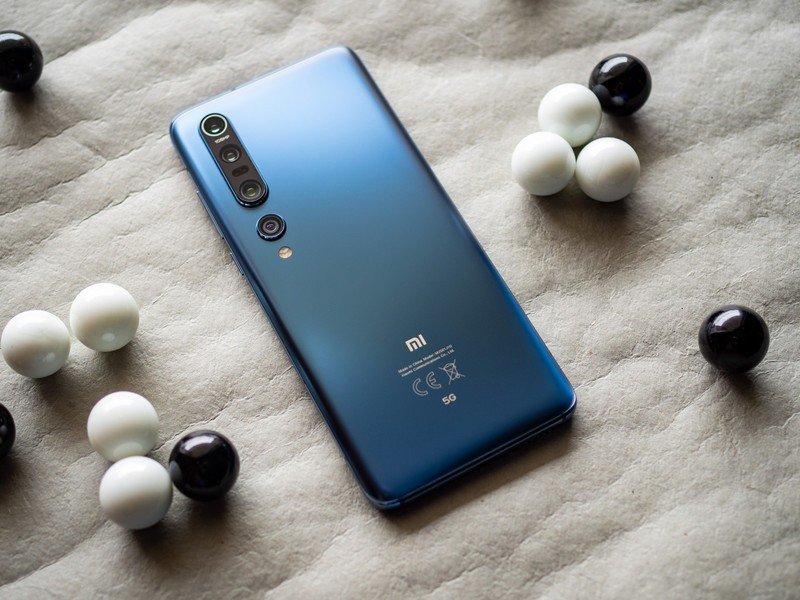
The first thing you'll notice about the Mi 10 Pro is that it looks very similar to other 2020 flagships. In fact, there's no way to tell the phone apart from its counterparts — at least from the front. It's almost as if all phone manufacturers sat together and decided to roll out the exact same design this year.
The Mi 10 Pro has the same curved edges on either side of the screen, symmetric curves at the back, and rounded corners. This isn't a new trend, because Samsung has been rolling out flagships with dual-curved screens for several years now. The two panes of glass curve around the edges and seamlessly blend into the aluminum mid-frame. The curvature of the screen and the positioning of the front camera behind the hole-punch cutout is near-identical to the OnePlus 8 Pro. In fact, were it not for the subtle differences in size and thickness, both phones would be indistinguishable.
Get the latest news from Android Central, your trusted companion in the world of Android
The Mi 10 Pro has the same glass sandwich aesthetic as other 2020 flagships. That's not a bad thing.
There are only so many ways to cut down on bezels and provide a front camera, and as such the design of the Mi 10 Pro feels derivative. That's not a bad thing because the phone itself is identical to the rest of the field, and it looks every bit as premium as its price tag would suggest. That said, it is missing a bit of flair, with the only colorful accent being the multi-colored ring around the 108MP camera at the back.
As for the design at the back, you get a frosted glass finish with a matte texture that's once again reminiscent of OnePlus. The matte layer makes it easier to hold the phone and prevents fingerprint smudges. But because of the curves on either side, the in-hand feel isn't as great as previous Xiaomi flagships. While the Mi 10 Pro weathered a few tumbles without any drawbacks, it is a good idea to pick up a case if you're interested in getting this phone. For what it's worth, Xiaomi did a decent job preventing accidental touches from the sides.
On the subject of in-hand feel, the Mi 10 Pro is considerably heavier than previous Xiaomi flagships, and that's mainly due to the 4500mAh battery, a sizable increase from the 3300mAh unit in the Mi 9 last year. Coming in at 208g, the added bulk is immediately noticeable, but the weight distribution is balanced and it doesn't feel top-heavy.
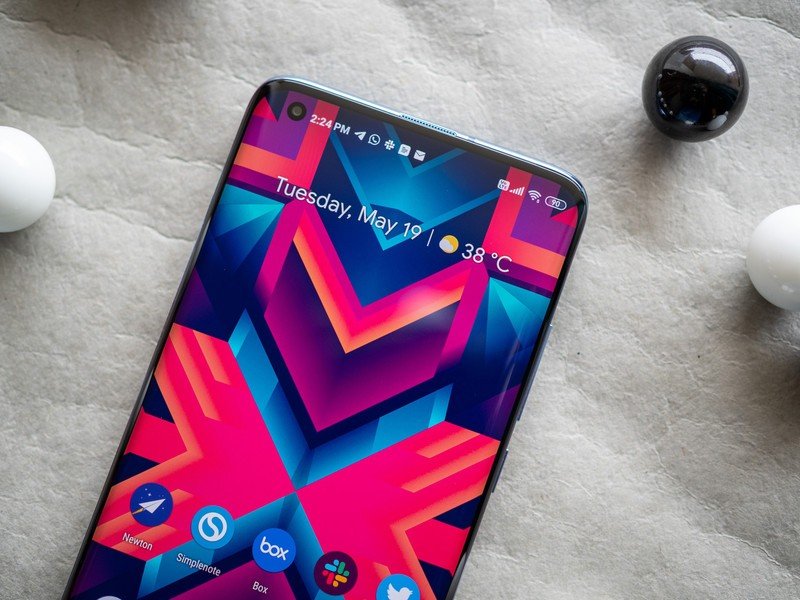
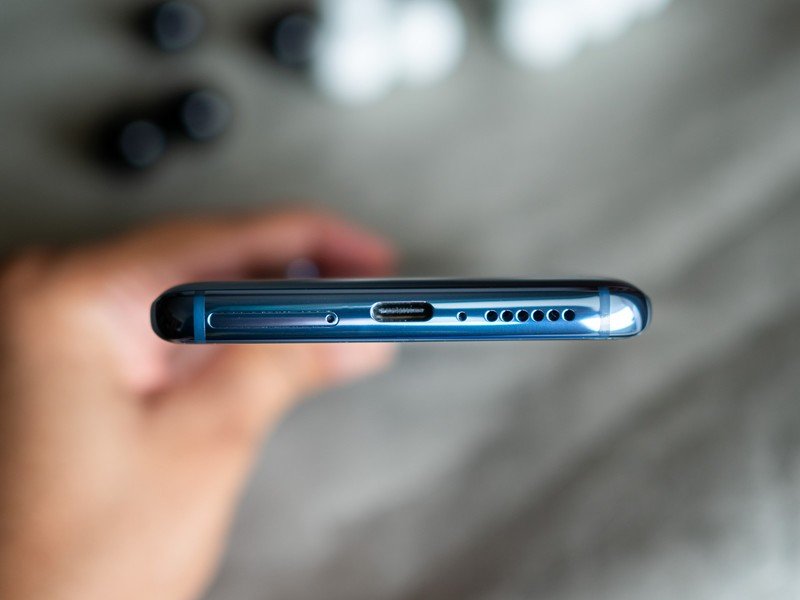
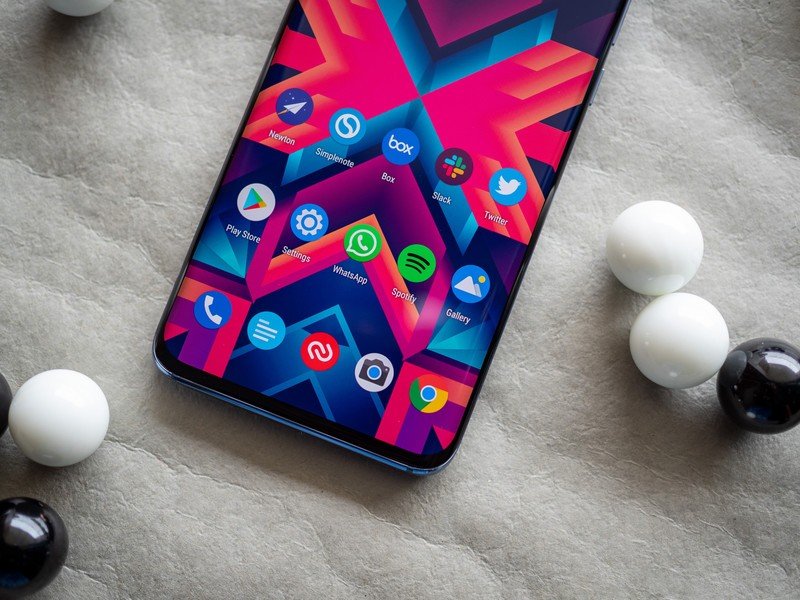
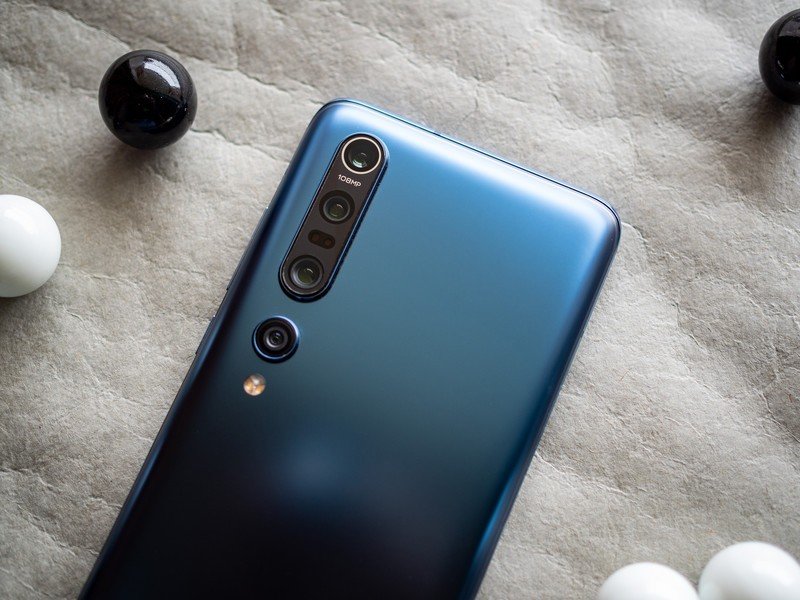


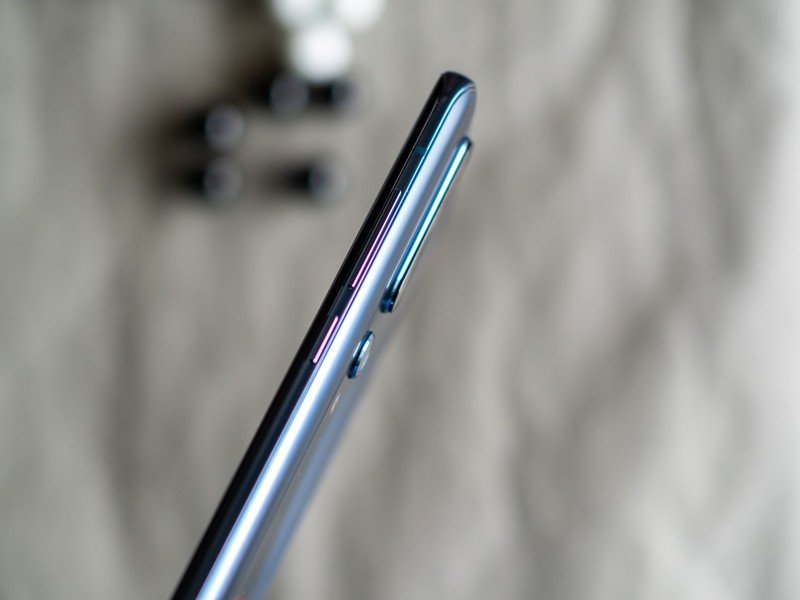
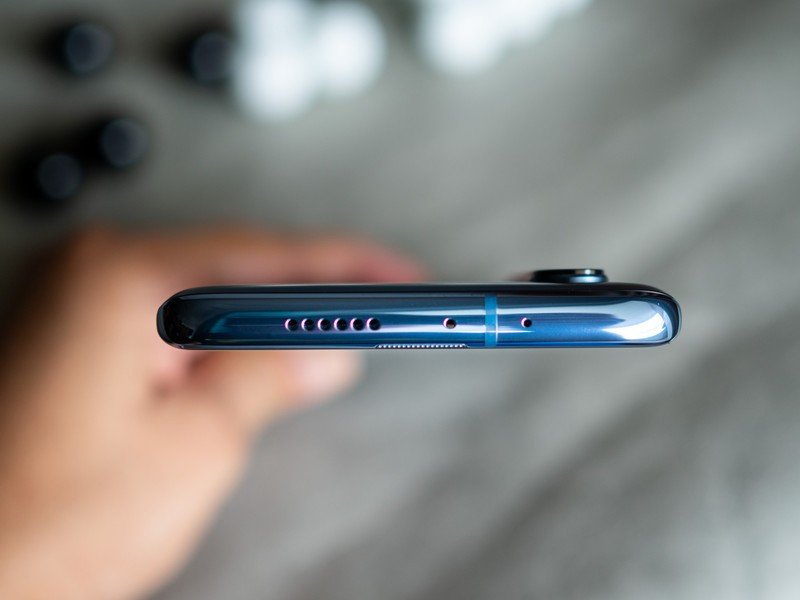
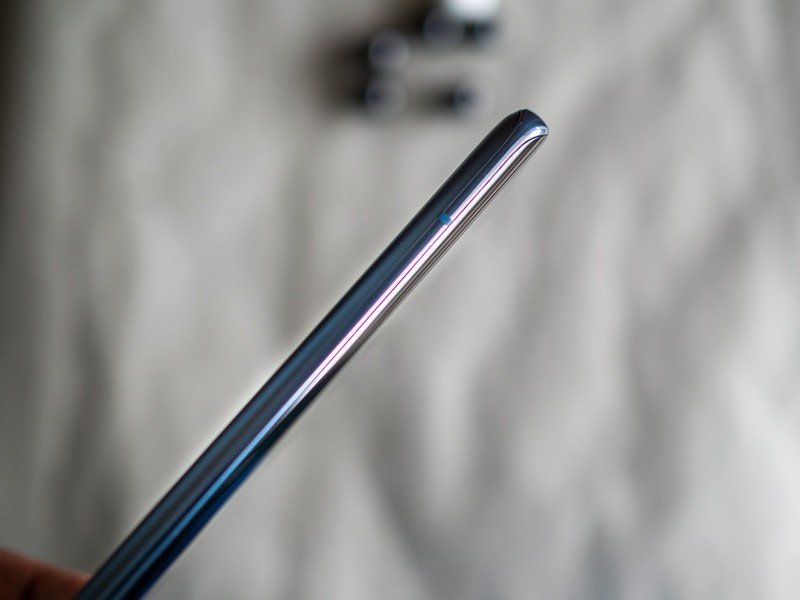
The color option I'm using is Solstice Grey, and it has a distinct shade of blue that looks very upmarket. The frosted glass finish at the back accentuates the color, and the mid-frame also gets the same coat of paint. The power and volume buttons are located on the right side, and the left side is bare. Like most Xiaomi phones, there's an IR blaster at the top, and the SIM card slot is at the bottom next to the USB-C port. On the other side of the port is a speaker, and there's an identical speaker located up top. There's also a tiny slit above the panel for the earpiece.
Interestingly, the global variant of the Mi 10 Pro has a dual SIM card tray, but the second slot is covered, and as such you can't put two SIM cards in the phone. There's no MicroSD card either, and as has been the case for a few years now, there's no 3.5mm jack.
The quad camera array dominates the design at the back, with three cameras included in the oblong camera housing along with the laser autofocus. The fourth camera and LED flash module is located below the housing. The camera module sits to the left, and it protrudes a fair bit from the body of the phone, creating a lot of wobble when the phone is laid flat on a table.
The Mi 10 Pro costs nearly twice as much as last year's Mi 9, and the design reflects that. Sure, Xiaomi hasn't added a lot of unique design flourishes, but the phone looks every bit as premium as the best that Samsung, OPPO, OnePlus, and Huawei have to offer. This is a true flagship through and through.

I mentioned earlier that the Mi 10 Pro has two identical speakers at the top and bottom. Instead of opting for a smaller secondary speaker, Xiaomi outfitted two of the same speakers at either ends of the phone, and that has led to one of the best stereo implementations I've seen on a phone yet. You get two distinct channels for audio, and because they are identical in size, there's no primary speaker. They dynamically adjust to deliver optimal sound based on the phone's configuration, and it's safe to say that the stereo speakers on the Mi 10 Pro are the loudest you'll find on a phone today.
The stereo sound makes a huge difference when gaming or streaming content on the phone. Another factor that plays a huge part in this is the display itself. The Mi 10 Pro has a massive 6.67-inch FHD+ (2340x1080) AMOLED display with an E3 coating. As should be obvious from the AMOLED moniker, the panel itself is made by Samsung.
This is the best display that Xiaomi put on a phone to date.
The highlight with the screen is that it offers a 90Hz refresh rate. It's not as high as the 120Hz panels on the Galaxy S20 series, but that doesn't matter. You still get smooth scrolling and you'll see a noticeable difference when switching over from a regular 60Hz panel. The difference between 90Hz and 120Hz isn't that evident, so you're not really missing out on much.
I would've liked it if Xiaomi outfitted the Mi 10 Pro with a QHD+ panel, but it's clear that the brand doesn't want to make the switch just yet. That said, the FHD+ AMOLED panel is fantastic, with vibrant colors and excellent brightness levels. There are no issues with the screen, and it gets sufficiently bright that I didn't face any problems viewing the screen under harsh light. There's no notification LED, but you can set up the edges of the screen to light up for incoming notifications.

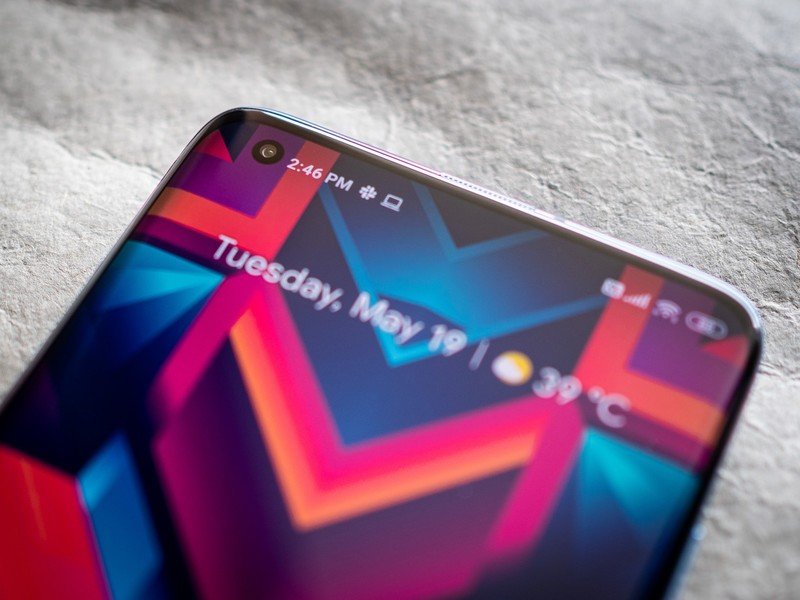
There are three color modes to choose from, and you get to tailor the color balance and warmth levels to your tastes. You also get an Always On Display that lets you pick from various clock faces and choose what shows up on the screen when it is off. One point to note about the hole-punch cutout: it isn't too distracting and you'll learn to ignore it after using the phone for a few days. It is definitely a better sight than the dual-camera cutout on the P40 Pro.
Xiaomi Mi 10 Pro Hardware and battery

Xiaomi phones have always offered robust hardware, and that's no different on the Mi 10 Pro. Packing the latest Snapdragon 865 chipset along with 8GB of LPDDR5 RAM and 256GB of UFS 3.0 storage, the phone is right up there with the best that the industry has to offer. There's nothing missing from an internal hardware point of view, and you also get 5G connectivity.
| Specs | Xiaomi Mi 10 Pro |
|---|---|
| Software | MIUI 11 based on Android 10 |
| Display | 6.67-inch FHD+ Super AMOLED |
| Chipset | 2.84GHz Snapdragon 865 |
| RAM | 8GB/12GB |
| Storage | 256GB/512GB |
| Rear Camera 1 | 108MP ƒ/1.7 (primary) |
| Rear Camera 2 | 8MP ƒ/2.0 (telephoto) |
| Rear Camera 3 | 20MP ƒ/2.2 (wide-angle) |
| Rear Camera 4 | 12MP ƒ/2.0 (portrait) |
| Front Camera 1 | 20MP ƒ/2.0 |
| Connectivity | Wi-Fi 6, BT5.1, NFC |
| Battery | 4500mAh | 50W/30W |
| Security | In-screen fingerprint |
| Colors | Alpine White, Solstice Grey |
| Dimensions | 162.5 x 74.8 x 8.9mm |
| Weight | 208g |
As should be obvious by now, the Snapdragon 865 is a performance beast. The chipset delivers outstanding performance in day-to-day use, and I didn't see any see any lag or slowdowns in day-to-day use. MIUI 11 has its share of quirks, but thankfully there are zero issues on the performance front.
Apps load instantaneously, the UI has been optimized for the 90Hz screen, and visually-intensive games are a delight to play on the Mi 10 Pro because of the hardware and excellent stereo sound. All in all, it is a joy to use the phone for everyday tasks like web browsing or scrolling through social media, as well as more interesting use cases involving gaming and streaming content.
There's also a three-layer liquid cooling system built into the phone that's designed to deliver better sustained performance. Honestly, the Snapdragon 865 on its own is plenty good, and MIUI 11 also offers a Game Turbo feature that lets you eke out maximum performance from the hardware on offer.
Xiaomi also offers a 12GB variant of the Mi 10 Pro that has 512GB of storage, but the 8GB option should be more than enough for most users. There's no MicroSD card here, so the only reason to get the 12GB option would be for the 512GB of UFS 3.0 storage. The rest of the hardware is similarly great: there's Wi-Fi 6 connectivity with 2x2 MIMO, Bluetooth 5.1, NFC, and dual GPS.
On the audio front, Xiaomi is touting the LHDC codec as a differentiator for Bluetooth streaming. The Mi 10 Pro is the first phone from the brand to feature the codec, and you'll be able to stream at bitrates up to 900kbps — three times as high as the regular SBC Bluetooth codec.
Oh, and the Mi 10 Pro has one of the best in-screen fingerprint sensors I've used yet. It is fast at authentication and has a low fault rate, and you can enable the sensor area to show up even when the screen is off. With devices like the Galaxy S20 series in particular falling short in this area, it's good to see Xiaomi offer a high-quality in-display fingerprint sensor.
The Mi 10 Pro delivers top-of-the-line specs with an excellent haptic motor, but it is missing IP68 protection.
Another area where Xiaomi has delivered this year is the haptics: the Mi 10 Pro is the first Xiaomi device I used that has a great vibration motor. There are lots of little elements in MIUI 11 that trigger the vibration motor, and Xiaomi says it is using an x-axis motor to deliver better haptic feedback. That definitely makes a difference here, and it's a welcome change to see Xiaomi add decent haptics to its phones.
While Xiaomi managed to get most things right on the Mi 10 Pro, a glaring omission is the lack of an IP rating. Xiaomi hasn't offered IP68 protection on a phone yet, and the Mi 10 Pro also misses out. With so many great options to choose from in this segment, every single omission makes a difference, and the lack of water resistance is a big miss from Xiaomi's side.
That said, the Mi 10 Pro still weathers the occasional splash of water thanks to the P2i coating that has been a mainstay on Xiaomi phones in recent years, but the lack of an IP rating hurts the device. This is clearly a feature that a lot of consumers care about, and Xiaomi is being obstinate in its refusal to add dust and water ingress protection to its devices.

Because the Mi 10 Pro has a 90Hz display and has 5G connectivity, Xiaomi outfitted it with a generous 4500mAh battery. Combine that with the aggressive memory management that MIUI offers and it translates to great usage figures.
With 50W wired and 30W wireless charging, you don't have to leave the Mi 10 Pro plugged in overnight.
I routinely averaged around six hours of screen-on-time on my Mi 10 Pro spread over the course of 15 to 18 hours, with usage involving a lot of streaming over Bluetooth, gaming, and reading content on the screen. There's no battery anxiety here, and the fact that I got those figures with AOD enabled throughout shows how good the Mi 10 Pro is in this area.
And when you do need to charge the phone, there's 50W wired and 30W wireless charging. Xiaomi even outfits the phone with a 65W charger in the box with USB PD and PPS, with the charger coming in handy for charging other accessories, including notebooks.
The 65W charger lets you charge the phone from flat to 60% in just 20 minutes, with a full charge taking under an hour. Honestly, there's no need to leave the Mi 10 Pro overnight, and if you don't want to plug in the device during the day, the 30W wireless charging is just as great. It takes marginally longer than the wired solution, but it is definitely better than wireless charging solutions from just a year ago.
The wireless charger isn't included in the box, but it is well worth the $35 asking price. It is a vertical charger and has a built-in stand to manage the heat, and it comes with a detachable cable. For non-Xiaomi phones, it reverts to Qi charging at 10W.
Xiaomi Mi 10 Pro Cameras
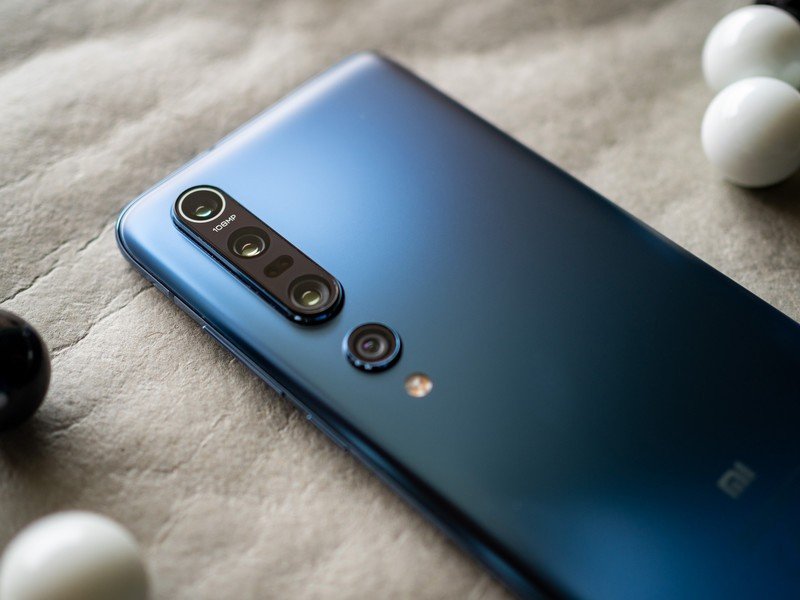
Xiaomi is betting on vastly improved imaging to be the Mi 10 Pro's differentiator. The Chinese brand partnered with Samsung over the ISOCELL Bright HMX, a 1/1.33-inch beast with a resolution of 108MP and 0.8um pixels. It is one of the largest sensors you'll find on a phone today, with only the P40 series edging out the Mi 10 Pro in 2020. Samsung offers the same 108MP sensor on the Galaxy S20 Ultra, so the fact that you're getting the same module on a €999 ($1,090) phone is a relative bargain.
The Mi 10 Pro has one of the best cameras you'll find in 2020.
Xiaomi is also using a unique system for zoom: there's an 8MP zoom lens for hybrid zoom, and the 12MP portrait lens delivers 2x optical zoom. The combination does a great job preserving detail even at a zoom factor of 10x. The Mi 10 Pro also has 8K video recording, the only phone outside of the Galaxy S20 series to offer this feature. A standout here is that 8K video works with OIS, which isn't the case on the Galaxy S20. You can also shoot 8K video at 30fps, with the S20 limited to 24fps.
There's a laser autofocus module, and a 20MP camera at the front for selfies. The camera UI is standard and will be immediately familiar if you've used a Xiaomi phone in the past: you get all the shooting modes laid out on a ribbon, and there are dedicated buttons for all the magnification modes. You can switch to 0.6 for the wide-angle lens, 1x for the primary sensor, 2x, and 5x for the zoom lenses. There's also a macro mode, with the wide-angle lens pulling double duty.
As for shooting modes, you get the usual video and photo modes, and then a dedicated mode that spits out 108MP shots, slow-motion video, short video, portrait, night, and pro mode. There's a nifty vlogging option in video mode that switches short videos together.

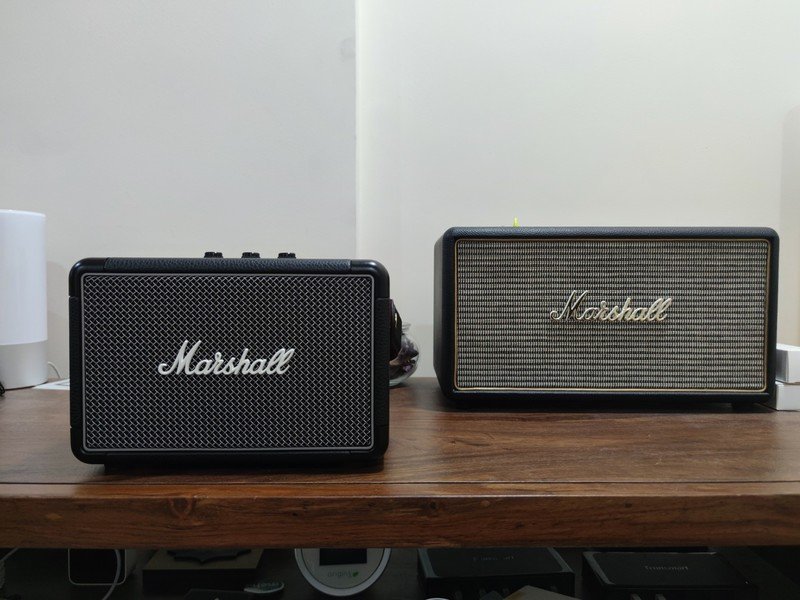




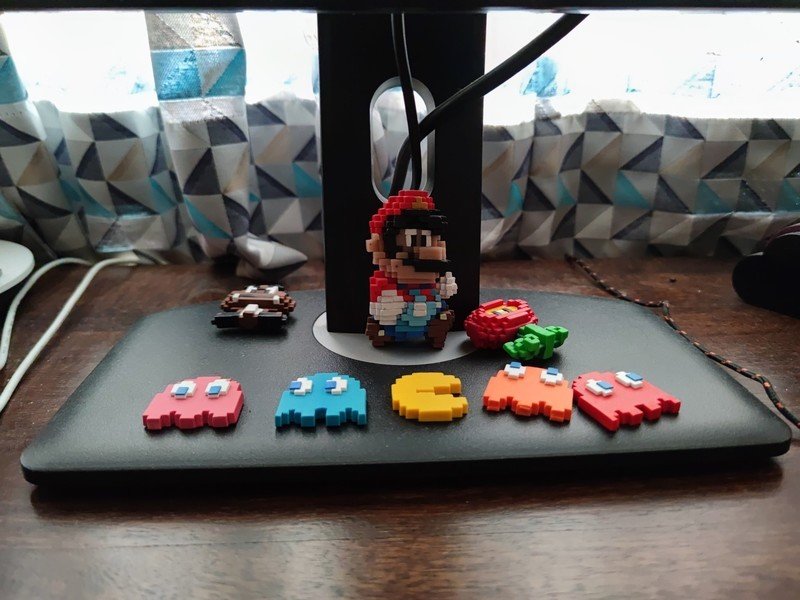

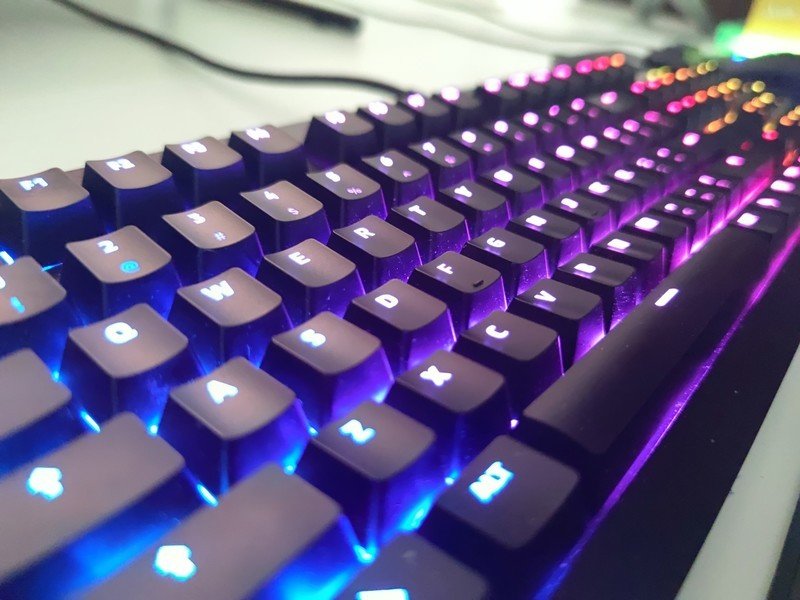

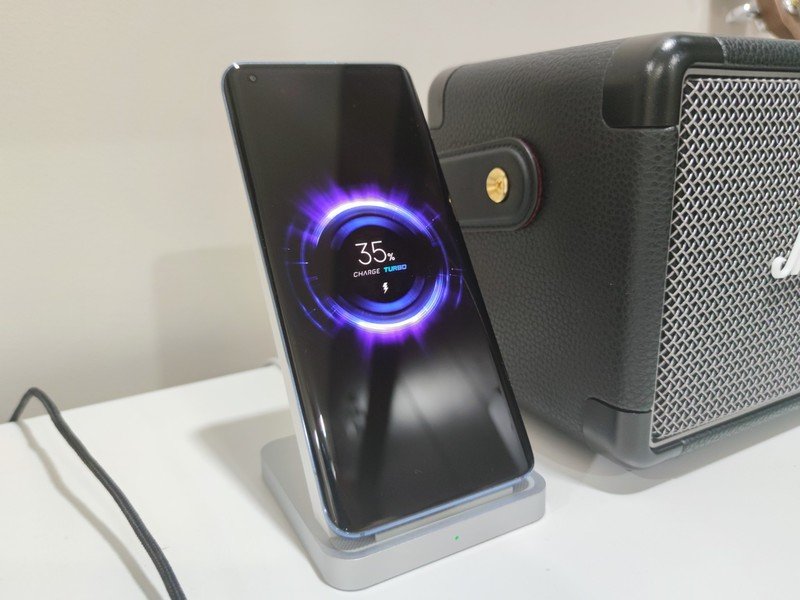
The primary 108MP camera uses 4-to-1 pixel binning to deliver 27MP shots, so you get plenty of detail. Daylight shots in particular look stunning on the Mi 10 Pro, with excellent dynamic range and great contrast levels. Portrait shots are also vibrant, with accurate edge detection and great bokeh. The Mi 10 Pro also takes fantastic photos at night, with the resultant photos offering great color vibrancy and high contrast levels. The dedicated Night Mode does a great job eking out more detail in low-light scenarios.
The highlight with the Mi 10 Pro is that the auxiliary cameras also do a great job. The 20MP wide-angle lens produces shots with accurate colors, and as for the zoom lens, you get a decent amount of detail at 5x and 10x zoom levels even if the colors look washed out. Similarly, video recording on the Mi 10 Pro is one of the best on Android today, and overall the device holds its own against the likes of the Galaxy S20 and Pixel 4 XL. The Pixel 4 takes marginally better photos at night, but the Mi 10 Pro isn't far behind. This is a stellar effort by Xiaomi, and the Mi 10 Pro has one of the best cameras you'll find on any phone in 2020.
Xiaomi Mi 10 Pro Software
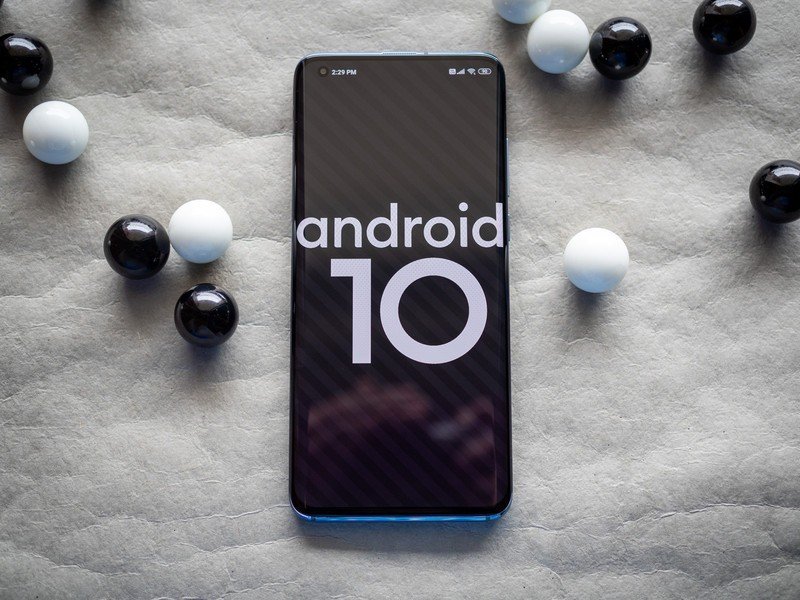
If there's one thing that has dominated the conversation around MIUI over the last 18 months, it's ads. With Xiaomi limiting the amount of profits it makes from hardware sales, it turned to ads as a revenue stream. That has led to a lot of consternation, but you don't have to worry about any of that here. Because the Mi 10 Pro is a flagship, it doesn't have any of the ads that plague regular Xiaomi phones.
That said, it's not all smooth sailing on the Mi 10 Pro. Several MIUI issues from previous generations have surfaced again, and it's annoying to deal with the same problems all over again. For instance, I don't get any push notifications from Newton Mail and Slack on the Mi 10 Pro. This isn't the first time I faced this particular problem in MIUI, because in the last three years there were several times when notifications just wouldn't show up on Xiaomi phones.
The Mi 10 Pro doesn't have ads, but there's a lot of bloatware and issues with notifications.
I resorted to enabling autostart and killing the battery optimization system, and that used to do the trick in the past. However, that doesn't work in MIUI 11, and regardless of what I tried, I could not get notifications to work on Newton. There are also intermittent issues with connecting to services like Fitbit. These problems should have been ironed out for good ages ago.
Then there's also the fact that MIUI 11 still does not have an app drawer. Xiaomi is adding the feature in new builds, but it isn't available on my unit yet. That's why I installed Lawnchair as soon as I set up my phone. You also get a decent amount of bloatware, and while most of it can be uninstalled, a lot of extraneous Xiaomi services are there to stay.
Moving on, the UI has a fresh coat of paint, the system-wide dark mode is great, and you get a smorgasbord of customization options. You also get the default Google dialer in lieu of Xiaomi's offering, and Android Messages as the default text client. There are signs that Xiaomi is working on tweaking MIUI for a global audience, but progress on this front has been slow.
Overall, MIUI 11 has a lot going for it, but persistent issues detract from the overall experience. Xiaomi introduced MIUI 12 last month, with the update slated to make its way to devices around the globe from the end of June. You'd think that Xiaomi's latest phone would be the first to receive the update, but that's not the case. Xiaomi is rolling out the update to just five phones in the first wave, and there's no timeline for when the Mi 10 Pro will make the switch to MIUI 12.
Xiaomi Mi 10 Pro Should you buy it?
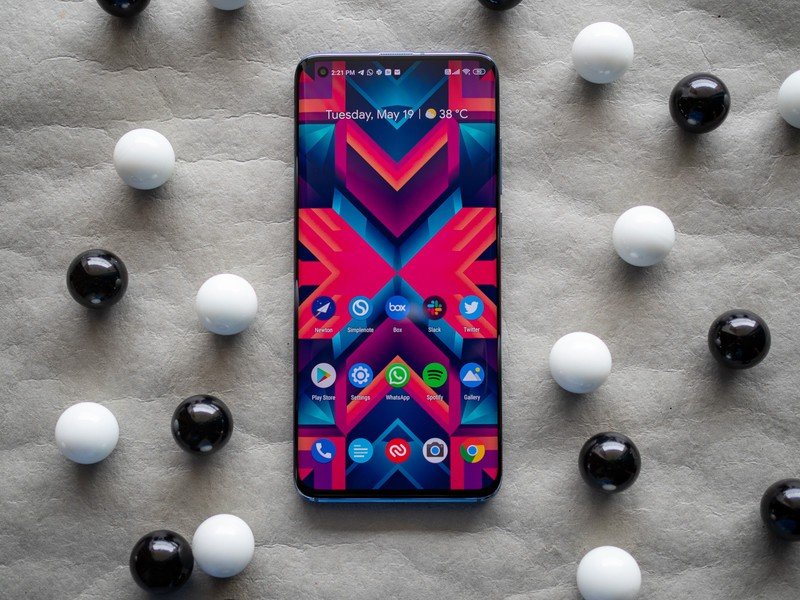
It's safe to say that the Mi 10 Pro is Xiaomi's best phone to date. With the phone retailing for nearly double the price of its predecessor, it needed to deliver in all key areas, and it does that. The 108MP camera is incredible, and it's second only to the Pixel 4 series and possibly the Huawei P40 Pro.
With a vibrant 90Hz screen, great internals, and fantastic camera, the Mi 10 Pro delivers in all key areas.
The rest of the features are similarly great. You get a vibrant screen with 90Hz refresh rate, MIUI 11 is optimized to take advantage of that 90Hz panel, and the internal hardware is the best that money can buy. I particularly like the fact that Xiaomi lavished attention on the in-screen fingerprint sensor and haptics. Xiaomi phones in the past struggled in these areas, but that's not an issue on the Mi 10 Pro.
You also get great battery life, and the 50W wired and 30W wireless charging options make the phone a standout in this category. Overall, the Mi 10 Pro delivers hardware worthy of its €999 ($1,090) asking price. My only issue with the phone is the software. MIUI 11 still has its share of issues, and they take away from what is otherwise a fantastic phone.
The update to MIUI 12 should fix most of these software issues, but it remains to be seen as to when Xiaomi will make the new version available on the Mi 10 Pro. If you can look past the software gremlins, you'll love what the Mi 10 Pro has to offer.
4 out of 5
It's for you if:
You want a great camera, the latest internal hardware with 5G connectivity, excellent stereo speakers, fast wired and wireless charging, and a 90Hz AMOLED dual-curved display.
It's not for you if:
You need a phone with a clean software, fast updates, or IP68 water resistance.
Alternatives:
As I mentioned at the start of the review, there's no shortage of options in the high-end category. The OnePlus 8 Pro is an obvious choice here. You get a similar design with a 120Hz QHD+ AMOLED display, same innards, and 30W wired and wireless charging. OxygenOS is one of the best skins on Android, and at $899 the OnePlus 8 Pro has everything you need in a flagship. The camera isn't quite as good as what you get on the Mi 10 Pro, but the clean software and IP68 rating more than make up for it.
Then there's the Galaxy S20 series. The Galaxy S20 Ultra has the same 108MP camera as the Mi 10 Pro, but if you don't want to pay $1,400 for a phone, the S20+ is a stellar alternative that has a camera that's almost as good for $200 less. You also get a better display with 120Hz refresh rate, IP68 rating, and 5G connectivity.

A sublime camera with so-so software
The Mi 10 Pro is Xiaomi's best phone to date. The 108MP camera takes outstanding photos in all lighting conditions, and you get the latest hardware money can buy today. The AMOLED panel has smooth scrolling thanks to the 90Hz refresh rate, and there's 50W wired and 30W wireless charging. The software has a learning curve, but overall you're getting a lot for your money.

Harish Jonnalagadda is Android Central's Senior Editor overseeing mobile coverage. In his current role, he leads the site's coverage of Chinese phone brands, networking products, and AV gear. He has been testing phones for over a decade, and has extensive experience in mobile hardware and the global semiconductor industry. Contact him on Twitter at @chunkynerd.
